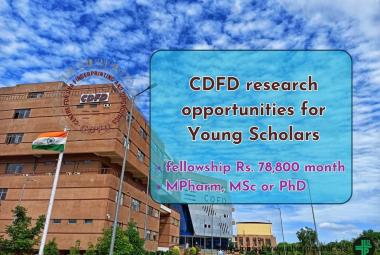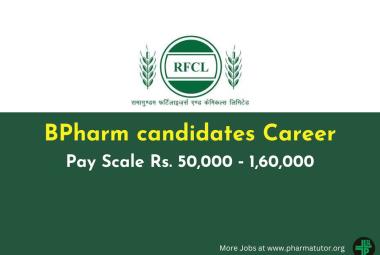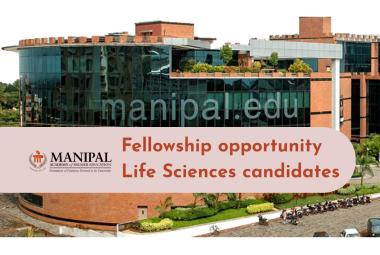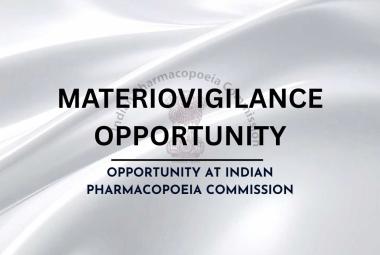{ DOWNLOAD AS PDF }
 ABOUT AUTHROS:
ABOUT AUTHROS:
Bikash Debnath*, Md. JashimUddin, Debasish Maiti
State Biotech Hub, Department of Human Physiology,
Tripura University, Suryamaninagar.
*bikashrips2014@gmail.com
ABSTRACT:
Central nervous system (CNS) drug development will be biology driven. Due to absence of functional platform for CNS drug targeting since, the large molecules pharmaceuticals cannot be delivered to brain. About 1.5 billion people worldwide are suffering from various type of central nervous system (CNS) disorders. Overcome to this problem modern pharmaceutical technology manufacturing the nonaparticles. Properly use of nonamedicines (nanoparticles) is one of the ways to control the CNS disorder in all over world. Nanoparticles are particles between 1 to 100 nm in size. Using nanotechnology it is possible to deliver the drug to the specific site of the tissue across the Blood -Brain Barrier (BBB).Various types of nanoparticle are available for treatment of CNS disorders. These are lipid based nanoparticles, solid lipid nanoparticles, polymer-based nanoparticles etc.
[adsense:336x280:8701650588]
REFERENCE ID: PHARMATUTOR-ART-2354
|
PharmaTutor (Print-ISSN: 2394 - 6679; e-ISSN: 2347 - 7881) Volume 3, Issue 8 How to cite this article: B Debnath, Md. JashimUddin, D Maiti; Nanoparticle (NP) as a Targeting Drug Delivery System to Blood-Brain Barrier (BBB): A Review; PharmaTutor; 2015; 3(8); 30-37 |
INTRODUCTION:
In recent century, the CNS drug development will be biology driven, bringing in focus the delivery of large molecules pharmaceuticals, such as antisence drugs, antibiotics and recombinant proteins. But due to absence of functional platform for Central nervous system (CNS) drug targeting since, the large molecules pharmaceuticals cannot be delivered to brain, and hence the full therapeutics advance of such agent will not be utilized properly. Overcome to this problem modern pharmaceutical technology manufacturing the nonaparticles. Nanoparticles are particles between 1 to 100 nm in size. In nanotechnology; a particle is defined as a small object that behaves as a whole unit with respect to its transport and properties. Particles are further classified according to diameter. The smallest size and good mobilization properties give nanoparticles the better opportunity to better penetration effect in Blood Brain Barrier (BBB) as a targeting drug delivery system. About 1.5 billion people worldwide are suffering from various type of central nervous system (CNS) disorder. Like Meningitis, Encephalitis, degenerative diseases such as Alzheimer, Parkinson’s disease and tumors such as Glioblastoma. Therefore, there is a strong demand from patients for effective treatments. The number of people with CNS disorders will be approximately 1.9 billion by 2020, unless concerted action is undertaken. [1] Overcome to this problem, nanotechnology gives the nanomedicine and it’s also being better effect to improve the CNS disorder. Nanomedicine, the application of nanotechnology to health care, holds great promise for revolutionizing medical treatments, imaging, faster diagnosis, drug delivery, and tissue degeneration. Materials and devices of nanometric dimensions are already approved for clinical use, and various products are being evaluated in clinical trials. Nanoparticle systems in CNS targeted drug therapy provide better penetration of therapeutic and diagnostic agents, and a reduced risk in comparison to conventional treatments. By using nanotechnology it is possible to deliver the drug to the targeted tissue across the BBB, release the drug at a controlled rate, and avoids degradation processes. Reduction of toxicity to peripheral organs and biodegradability can also be achieved with these systems. Many therapeutic agents are poorly soluble or insoluble in aqueous solutions. These drugs provide challenges to delivering them orally or parentally, however these compounds can have significant benefits when formulated through nanoparticle technology. More efficient use of the drug can be realized both by eliminating liver metabolism and directly targeting the brain. [2] Targeted drug delivery is a means of concentrating dugs at a specific site relative to other parts of the body.This improves efficacy of the while reducing side effects. Drug targeting is the delivery of drugs to receptors or organs or any other specific part of the body to which one wishes to deliver the drugs exclusively. In this review article we are try to highlight how the nanoparticle work in blood brain barrier as a targeting drug delivery system.[3]
ANATOMY OF BLOOD BRAIN BARRIER: [4, 5]
The blood–brain barrier (BBB) is a highly selective permeability barrier that separates the circulating blood from the brain extracellular fluid (BECF) in the central nervous system (CNS). The BBB consists of a monolayer of polarized endothelial cells (EC) connected by complex tight junctions (TJ). It is a continuous zipper-like tight junctioned endothelial cellular layer. These tight junctions (TJ) are completely occluded and adherens junctions (200 A°). That is why, these tight endothelium junctions can be ≈100 times tighter than other capillary endothelium junctions. The structure of these tight junctions was first determined in the 1960s by Tom Reese, Morris Kranovsky and Milton Brightman. The increased electrical resistance at the TJ strains paracellular movement of substances into the brain. Proteins of the adherens junction work in accordance with TJ proteins for cellular adherence. Astrocytic processes (glial cells) in the extracellular matrix (ECM) envelope the capillaries and influence transport across the EC. Questions once arose as to whether or not astrocytes actually participated in BBB. It is now accepted that 20 nm gap between adjacent astrocytes supports that they do not. P-glycoproteins (P-gp) on apical EC membrane efflux substances from brain into blood stream.
[adsense:468x15:2204050025]

Figure 1: Anatomical structure of Blood Brain Barrier (BBB). [6]
FUNCTION OF BLOOD BRAIN BARRIER (BBB): [5, 7]
- The main function of the Blood Brain Barrier is to protect the brain and keep it isolated from harmful toxins that are potentially in the blood stream.
- The blood– brain barrier allows the passage of water, some gases, and lipid soluble molecules by passive diffusion.
- The blood–brain barrier acts very effectively to protect the brain from many common bacterial infections. Thus, infections of the brain are very rare. However, since antibodies are too large to cross the blood-brain barrier, infections of the brain which do occur are often very serious and difficult to treat. Viruses easily bypass the blood-brain barrier, however, attaching themselves to circulating immune cells.
- BBB expresses certain enzymes like peptidases along with several cytosolic enzymes and efflux p-glycoprotein system that helps effluxing drugs from the endothelial cells back into the blood which helps in its further protecting action towards the brain microenvironment. Thus the BBB is often the rate-limiting factor in determining permeation of therapeutic drugs into the brain.
- BBB work as a dynamic biological entity, in which active metabolism and carrier-mediated transports occur.
- The delivery of drugs to CNS via the cardiovascular system is often precluded by formidable barriers viz. The BBB and the Blood Cerebro Spinal Fluid Barrier (BCB).
- The BBB limits both transcellular and paracellular passage of cells and molecules from the systemic circulation into the CNS and vice versa. Transcellular passage of hydrophilic molecules is limited due to a low rate of transcytotic vesicles, an extremely low pinocytotic activity, expression of active efflux membrane pumps of the ATP-binding cassette (ABC) family such as P-glycoprotein, and high metabolic activity (cytosolic enzymes and transporters).
- The tight junctions between endothelial cell results in a very high Tran’s endothelial electrical resistsnce of 1500-2000 Ω. cm2 compared to 3-33 Ω.cm2 of others tissues which reduces the aqueous based para-cellular diffusion that is observed in other organ.
NANOPARTICLE TARGETED TO BRAIN: [1, 8]
Neurological disorders are an important cause of mortality and constitute 12% of total deaths globally. Among the neurological disorders, Alzheimer and other dementias are estimated to constitute 2.84% of the total deaths, while cerebral vascular disease constitute about 8% of the total deaths in high income countries in 2005.
In these above functions its has been clear that nanoparticle are successfully targeted to the brain if it is easily cross the Blood Brain Barrier (BBB), and it will be lipid soluble, mostly active in passive diffusion. It is again remember that NPs are objects sized between 1 and 100 nm that work as a whole unit in terms of transport and properties. So, nanotherapy is one of the important therapies to reduce the rate of mortality in CNS diseases in all over world.
Nanoparticle targeted to the brain in following steps:
i. Nanoparticle drug concentration increasing the inside, or at the luminal surface of BBB cells, establishing a local high concentration gradient between blood and brain, higher than that obtainable after systemic administration of the free drug. The gradient should then favour the enhanced passive diffusion of the drug. As for example, this task could be realized by synthesizing NPs functionalized to target brain capillary endothelial cells. This feature can be followed or not by their subsequent uptake from targeted cells.
ii. By moving themselves into the CNS, together with their drug cargo. As for example, this task can be realized enabling NPs targeting of brain capillary endothelial cells and their subsequent transcellular passage across the BBB.
Several strategies have been investigated (Fig. 2) for effective clinical outcome for different CNS conditions presented in following:

Fig2: Overview of different approaches of brain drug targeting, (ANS-Autonomic Nervous System, CNS-Central nervous System, BBB-Blood Brain Barrier, mAbs- Monoclonal Antibiotics). [9]
DRUG TARGETING TO BRAIN IS A DIFFICULT PROCESS, WHY?[7, 10]
In this above portion of the article we are clearly understood that small molecules readily cross the BBB. However, in fact, < 2% of all small molecules crosses the BBB easily. In the Comprehensive Medicinal Chemistry (CMC) database There are >7000 drugs established, and only 5% of these drugs treat the CNS disorder. It has been investigated that 100% of large molecule drugs and 98% of small molecule drugs do not cross BBB. For a small molecule drug to cross the BBB in significant amounts, the molecule must have two important characteristics like molecular mass must be under 400 Da and high lipid solubility. Due to these reasons the brain drug targeting becomes more difficult for the pharmaceutical industries. Now it is a very challenging to all pharmaceutical company in all over world how the improve brain targeting drug delivery and minimise the CNS disorders. A brief account on drug molecules being applied by several routes and their use for brain targeting has been summarized in table 1.
Table1: Drug molecules being applied by several routes and their use for brain Targeting.
|
Drug |
Route of administration |
Application of delivery |
|
Morphine |
Transnasal route |
Opioid Analgesics & Antagonists. |
|
Dopamine |
Transnasal route |
Antiparkinsoniandesease. |
|
Olanzapine |
Transnasal route |
antipsychotic agent |
|
Neurotrophic Agents |
Intranasal route |
Brain Disorders |
|
Gollotannin |
Intranasal route |
Decrease frequency of ischemic brain injury |
|
Benzodiazepines, Diazepam, Lorazepam |
Intranasal route |
Epilepsy |
|
Phenobarbitone, Butabarbitone, Zolpidem |
Intranasal route |
Insomnia |
|
Cytosine arabinoside |
IV route |
An anticancer agent |
|
GDNF (glial derived neurotropic factor) |
Intra cerebroventricular route |
For treating parkinsonism |
|
Etoposide, Doxirobisin |
Instigated in the form of reservoir type osmotic pump by implantation |
For treating metastatic brain tumors |
TYPES OF NANOPARTICLES TERGETING TO BRAIN:
Following types of nanoparticles generally use in drug targeting to brain cure the CNS disorder:
LIPID BASED NANOPARTICLES:
Liposomes: Liposomes, first described in 1965 are established drug and gene delivery carriers with clinical evidence of efficacy and several commercially available approved clinical formulations. [11, 12] Liposomes are small artificial vesicles of spherical shape that can be created from cholesterol and natural nontoxic phospholipids. Due to their size and hydrophobic and hydrophilic character (besides biocompatibility), liposomes are promising systems for drug delivery. Liposomes are the first generation of nanoparticulate drug delivery systems and are constituted by one or more vesicular bilayers (lamellae) composed of amphiphilic lipids, delimiting an internal aqueous compartment. Liposomes have been largely utilized for brain drug delivery, for the treatment of cerebral ischemia, for delivery of opioid peptides and brain tumours. [13, 14]Liposomes can trap both hydrophobic and hydrophilic compounds, avoid decomposition of the entrapped combinations, and release the entrapped at designated targets. Because of their biocompatibility, biodegradability, lowtoxicity, and aptitude to trap both hydrophilic and lipophilic drugsand simplify site-specific drug delivery to tumour tissues. [15]
NOW YOU CAN ALSO PUBLISH YOUR ARTICLE ONLINE.
SUBMIT YOUR ARTICLE/PROJECT AT editor-in-chief@pharmatutor.org
Subscribe to Pharmatutor Alerts by Email
FIND OUT MORE ARTICLES AT OUR DATABASE
Cationic liposomes: Cationic liposomes containing positively charged lipids have been developed and initially used as transfection vehicles, to deliver genetic material (e.g., DNA) into the cell, avoiding the lysosomal digestion. One example of cationic liposome uses bolaamphiphiles, which contain hydrophilic groups surrounding a hydrophobic chain to strengthen the boundary of the nano-vesicle containing the drug. Bolaamphiphiles a no-vesicles can cross the BBB, and they allow controlled release of the drug to target sites. [16]

Fig3: Liposomes drug delivery. [17]
SOLID LIPID NANOPARTICLES (SLNs):
Solid lipid nanoparticles (SLNs) are a stable lipid-based nanocarrier with a solid hydrophobic lipid core, in which the drug can be dissolved or dispersed. They are made with biocompatible lipids such as triglycerides, fatty acids, or waxes. They are generally of small size allowing them to cross tight endothelial cells of the BBB and escape from the reticuloendothelial system (RES). High-pressure homogenization or micro-emulsification can be used for manufacturing of nanoparticles. In addition, functionalizing the surface of solid lipid nanoparticles with polyethylene glycol (PEG) can result in increased BBB permeability. The advantages of SLNs are controlled released of the incorporated drug canbe achieved up to several weeks. There is also a scope for drug targeting by coating or attaching with the legends. In their small particle size they have cross the liver and spleen easily. [18]
 Fig4: Solid lipid nanoparticles. [19]
Fig4: Solid lipid nanoparticles. [19]
POLYMER-BASED NANOPARTICLES:
Polymeric Nanoparticles:
Over the last decade polymeric nanoparticles have attracted researchers in targeting drug molecules to brain. Polymeric Nanoparticles are nanosized carriers (1 – 1000 nm), made of natural or synthetic polymers, in which the drug can be loaded in the solid state or in solution, or adsorbed or chemically linked to the surface. Nowdays, the use of polymeric Nanoparticle is one of the most promising approaches for CNS drug delivery. As name only suggest polymeric nanoparticles are nanoparticles which are prepared from polymers. Most popular ones are polylactides (PLA), polyglycolides (PGA). Poly(lactide-co-glycolides)(PLGA), polyanhydrides, polycyanoacrylates, and polycaprolactone. In spite of development of various synthetic and semi-synthetic polymers, also natural polymers such as chitosan can be utilized. Nanoparticles can be synthesized from preformed polymers or from a monomer during its polymerization, as in the case of alkyl cyanoacrylates. As such, nanospheres or nanocapsules can be synthesized, with their resultant structures that are dependent upon the technology employed in the manufacture. Nanospheres are the dense polymeric matrices in which drug are dispersed, where as nanocapsules present a liquid core surrounded by a polymeric shell. Most techniques involving the polymerization of monomers include the addition of the monomer into the dispersed phase of an emulsion, an inverse microemulsion or dissolved into a non-solvent of the polymer. Finally, two main approaches have been proposed for the preparation of nanoparticles by synthetic polymers. The theory of the first scheme follows the emulsification of a water-immiscible organic solution of the polymer, in a surfactant-containing aqueous phase, and followed by solvent evaporation. The second approach follows the precipitation of a polymer after the addition of a non-solvent of the polymer. [20-22]
Chen et al. have discussed polymeric nanoparticles as suitable delivery systems for brain. They have outlined various mechanisms for nanoparticle mediated drug uptake by the brain. [23] These include:
1. Enhanced retention in the brain–blood capillaries, with an adsorption on to the capillary walls, resulting in a high concentration gradient across the BBB.
2. Opening of tight junctions due to the presence of nanoparticles.
3. Transcytosis of nanoparticles through the endothelium.
Advantages of polymeric nanoparticles are Increases the stability of any volatile pharmaceutical agents, easily and cheaply fabricated in large quantities by a multitude of methods, Delivers a higher concentration of pharmaceutical agent to a desired location.
Polymeric Micelles:
Polymeric micelles are nanosized water dispersible clusters of polymeric molecules and thus are excellent nanocarriers for PDT (Photodynamic therapy) drugs. Along with photosensitizing agents, iron oxide nanoparticles were encapsulated inside the nanocarrier, which allowed them to respond to externally applied magnetic field. This magnetically guided drug delivery would allow for the use of lower concentration of drug to deliver a therapeutic dose, significantly reducing the amount of PDT drugs that accumulate in normal tissue. Photodynamic therapy (PDT) is a novel therapy technique, used for treating the superficial tumors. In this therapy, photosensitizing agents are used for photochemical irradiation of malignant cells. Stability can be improved by cross linking between the shell and the core chains. Additional tenable features of polymeric micelles are the possibilityto render them responsive to external stimuli (pH, light, temperature, ultrasound, etc.). [24]

Fig5: Tergated polymeric micelles. [25]
DENDRIMERS:
Dendrimers are branched polymers, reminding the structure of a tree. A dendrimer typically symmetric around the core, and when sufficiently extended it often adopts a spheroidal three-dimensional morphology in water.
Dendrimers exhibit a highly branched, 3D architecture and comprise an initiator core, several interior layers composed of repeating units, and multiple active surface terminal groups. The branches and surface groups of dendrimers increase exponentially in number with the generation (G) of the dendrimers, whereas the diameter of dendrimers increases by about 1 nm with the generation, as shown in Figure 6.

Fig6: Schematic presentation of dendrimers as a nanoscaffold with a core. [26]
Some advantages of dendrimers include their branching structure and the control of surface functionality, making them excellent carriers for more than one single drug to the brain; they have a high loading capacity and low toxicity. Limitations of their use include the high cost of manufacture and the need for assessment of the long-term human health consequences of dendrimer exposure in vivo. [27]
CONCLUSION:
In this above discussion it is concluded that nanotechnology developed to deliver drugs into brain via BBB for patients with brain tumor and other CNS disorder treatment. In the table: 1, we have clearly mentioned the drugs which are used as a nanomedicine, their route of administration and application of use. NPs offer clinical advantages for drug delivery such as decreased drug dose, reduced side effects, increased drug half-life, and the possibility to enhance drug crossing across the BBB. So, the aim of nanomedical science is decreased the CNS disorder patent in all over world.
ACKNOWLEDGEMENT:
I am thankful to DBT, Govt. Of India for give me opportunity to working State Biotech Hub, Tripura University and really thanks to all staff members of State Biotech Hub, Tripura University for their valuable knowledge shear to me. I am especially thanks to Dr. Debasis Maity a big scientist of Tripura University dept. Of Human Physiology for helping me any kind of problem solves. And also thanks to Md. Jashim uddin a PhD scholar dept. Of Human Physiology cum technical assistant (Lab.) dept. Of Botany for encourage me doing this kind of work.
REFERENCES:
1. Mohanraj V.J. and Chen Y; Nanoparticles – A review; Tropical Journal of Pharmaceutical Reaearch; 2006; 5(1); 561–573.
2. Haibin L. and Xuechen D; Nanoparticles for drug delivery to the central nervous system; Nanoscience Reviews; 2006; 11; 207–209.
3. Malhotra M. And Prakash S; Targeted drug delivery across blood–brain barrier using cell penetrating peptides tagged nanoparticles; Current Nanoscience; 2009; 7; 81–93.
4. Schlosshauer B; The blood–brain barrier: morphology, molecules, and neurothelin; Bioassays; 1993; 1; 341–346.
5. Butte A.M. and Jones H.C; Abbot N.J.; Electrical resistance across the blood-brain barrier in anaesthetized rats a Developmental Study; J. Physiol; 1990; 429; 47–62.
6. Roney C., Kulkarni P., Arora V., Antich P., Bonte F., Wu A., Mllikarkuana N.N., Manohars, Ziang H-F., Kulkarni A.R., Sung H-W., Malladi S. and Aminabhavi T.M; Targeted nanoparticles for drug delivery through the blood–brain barrier for Alzheimer’s disease; Journal of Controlled Relase; 2005; 108; 193–214.
7. Bernacki J., Dobrowolska A., NierwinskaK. And Ma?ecki A; Physiology and pharmacological role of the blood–brain barrier; Pharmacol. Rep; 2008; 60 (5); 600–622.
8. Haque S., Md S., Alam M.I., Sahni J.K., Ali J. and Baboota S; Nanostructure based drug delivery systems for brain targeting. Drug Development and Industrial Pharmacy; 2012; 38(4); 387–411.
9. Birst R.; Brain drug delivery system: A comprehensive review on recent experimental and clinical finding; International Journal of Pharmaceutical Sciences and Research; 2011; 2(4); 792–806.
10. Pardridge W.M; Blood–brain barrier delivery; Drug Discov.Today; 2007; 12(1/2); 54–61.
11. Gregoriadis G; Liposome research in drug delivery: the early days. Journal of Drug Targeting; 2008; 16( 7–8); 520–524.
12. Nabel G.J., Nabel E.C., Yang Z.Y., et al; Direct gene transfer with DNA-liposome complexes in melanoma: expression, biologic activity, and lack of toxicity in humans; Proceedings of the National Academy of Sciences of the United States of America; 1993; 90(23); 11307–11311.
13. Budai M. and Szogyi M; Liposomes as drug carrier systems: preparation, classification and therapeutical advantages of liposomes; Acta Pharmaceutical Hungarica; 2001; 71(1); 114–118.
14. Ishii T., Asai T., Oyama D., Agata Y., Yasuda N., Fukuta T., Simizu K., Minamino T and Oku N; Treatment of cerebral ischemia–reperfusion injury with PEGylated liposomes encapsulating FK506; FASEB Journal; 2013; 27(4); 1362–1370.
15. Shehata T., Ogawara K., Higaki K. and Kimura T; Prolongation of Residence Time of Liposome by Surface-Modification with Mixture of Hydrophilic polymers; Int J. Pharm; 2008; 359; 272–279.
16. Hwang, Seung Rim; Kim, Kwangmeyung. Nano-enableddelivery systems across the blood-brain barrier; Archives of PharmacalResearch; 2013; 1–7.
17. Gupta M. And Sharma V; Targeted drug delivery system: A review. Res. J. Chem. Sci; 2011; 1(2).
18. Kaur I.P., Bhandari R., Bhandari S., and Kakkar V; Potential of solid lipid nanoparticles in brain targeting; Journal of Controlled Release; 2008; 127(2); 97–109.
19. Mori N.M., Sheth N.R., Mendapara V.P., Ashara K.C. and Paun J.S; SLS brain targeting drug delivery for CNS: A novel approach; Int. Res. J. Pharm; 2014; 5(9).
20. Aminabhavi T.T.M., Soppimath K.S., Kulkarni A.R. and RudzinskiW.E; Biodebradable polymeric nanoparticles as drug delivery devices; J. Control. Release; 2001; 70; 1– 20.
21. Gubha S. and Mandal B; Dispersion polymerization of acrylamide; J. Colloid Interface Sci; 2004; 271; 55– 59.
22. Zambaux M., Bonneaux F., Gref R., Maincent P., Dellacherie E., Alonso M., Labrude P. and Vigernon C.; Influence of experimental parameters on the characteristics of poly(lactic acid) nanoparticles prepared by double emulsion method; J. Control.Release; 1998;50; 31– 40.
23. Chen Y., Dalwadi G. and Benson H.A.E; Drug delivery across the blood– brain barrier; Cur.Drug Deliv; 2004; 361–376.
24. Neha M D., Pranav B P., Anita P A. and Vilasrau J K; Polymeric micelles as a drug carrier for tumor targeting; Chronicles of Young Scientists; 2013; 4(2):94-102.
25. google image.com.
26. Xu L., Zhang H. and Wu Y.; Dendrimer advances for the central nervous system delivery of therapeutics; Ass Chemical Neuroscience; 2014; 5; 2–13.
27. LeyuanXu., HaoZhang., and Yue Wu.; Dendrimer advances for the central nervous system delivery of therapeutics; Neurosciences; 2014; 5; 2-13.
NOW YOU CAN ALSO PUBLISH YOUR ARTICLE ONLINE.
SUBMIT YOUR ARTICLE/PROJECT AT editor-in-chief@pharmatutor.org
Subscribe to Pharmatutor Alerts by Email
FIND OUT MORE ARTICLES AT OUR DATABASE









